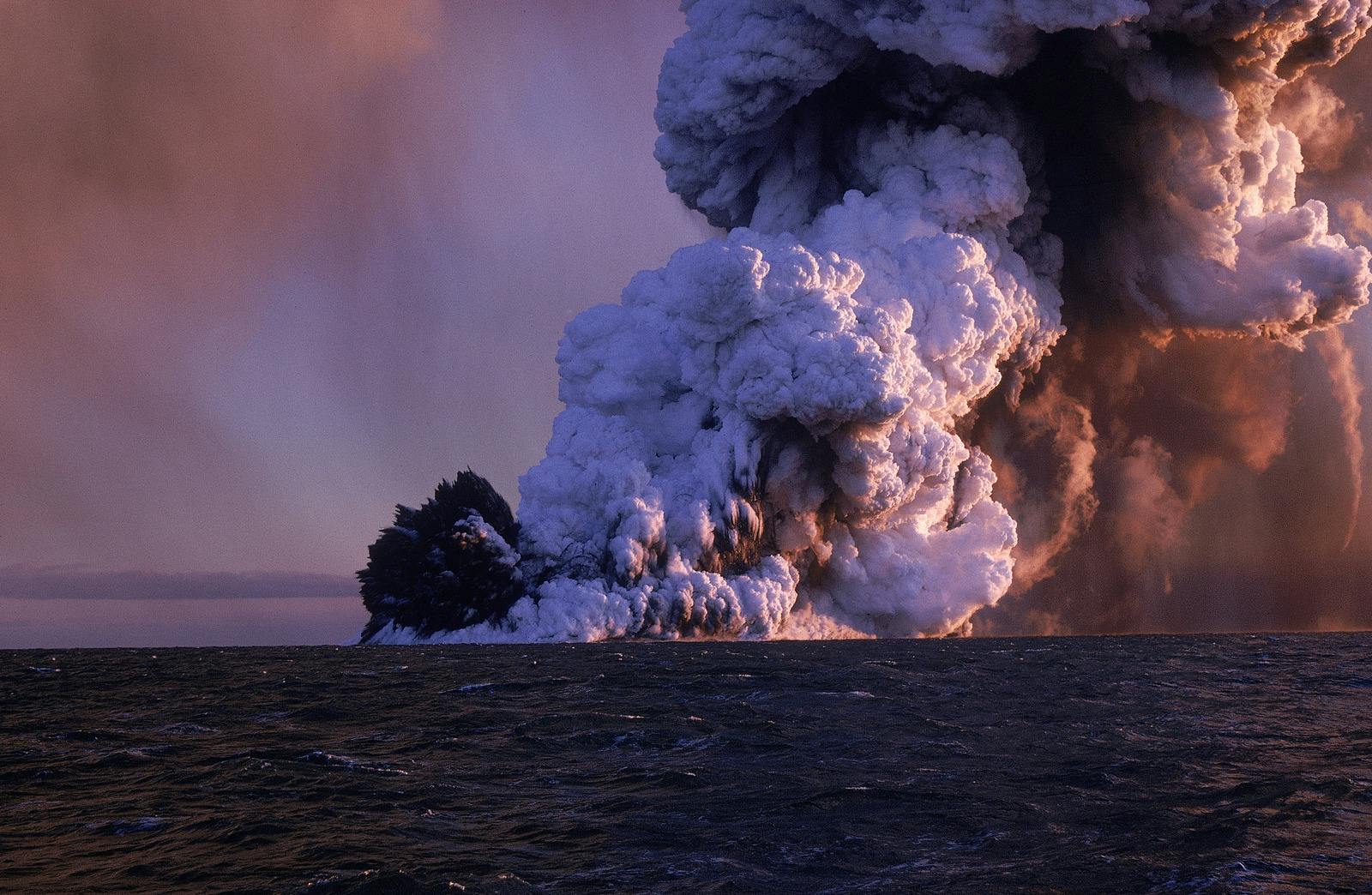
What is a Submarine Volcano?
A submarine volcano, also known as an underwater volcano, is a volcanic structure beneath the ocean’s surface. These volcanoes form through the same geological processes as land-based volcanoes but are on the ocean floor. Submarine volcanoes can have a variety of shapes and sizes, and their eruptions contribute to the dynamic geological features of the ocean floor.
What are the Key Characteristics of a Submarine Volcano?
Submarine volcanoes can take various forms, including volcanic cones, calderas, and seamounts. Volcanic cones may resemble those found on land, while calderas are large, crater-like depressions often formed by the collapse of the volcanic summit. Seamounts are underwater mountains formed by volcanic activity.
These volcanoes are often associated with hydrothermal vents, where hot mineral-rich fluids are released into the ocean. Some submarine volcanoes are located along mid-ocean ridges, where tectonic plates diverge, and magma rises to create new oceanic crust. The Mid-Atlantic ridge is a prominent feature of underwater volcanic activity.
What is an Example of a Submarine Volcano?
One example of a well-known submarine volcano is Axial Seamount, an underwater volcano located on the Juan de Fuca Ridge, an oceanic spreading ridge off the coast of the Pacific Northwest in the northeastern Pacific Ocean. It is part of the broader network of mid-ocean ridges where tectonic plates are diverging and new oceanic crust is forming.

How are Submarine Volcanoes Formed?
Submarine volcanoes are formed by the eruption of magma from the Earth’s mantle onto the ocean floor. The magma cools and solidifies, creating volcanic structures beneath the water.
Are Submarine Volcanoes Dangerous?
Submarine volcanoes can be potentially dangerous, although their impact on human populations is generally limited due to their underwater location. Like their terrestrial counterparts, submarine volcanoes can experience explosive eruptions that may lead to the release of volcanic ash, gases and the formation of pyroclastic flows underwater. Moreover, effusive eruptions from submarine volcanoes can result in the release of molten lava, which, when it touches seawater, can solidify quickly and contribute to the growth of the volcano.
Additionally, in some cases, particularly if a portion of a submarine volcano collapses during an eruption, there is a potential for the generation of tsunamis. Also, volcanic activity on the seafloor can lead to changes in the topography and structure of the ocean floor. This deformation can impact the habitats of marine organisms and alter the characteristics of the seafloor.
Are there Submarine Volcanoes in Iceland?
Submarine volcanoes of different ages can be found all around Iceland. The youngest ones are related to the spreading zones along the Reykjanes and Kolbeinsey ridges, as well as around the Westman Islands, south of Iceland. Several submarine eruptions have been documented in historical times. Most of them have occurred southwest of Reykjanes.
In some cases, short-lived volcanic islands were formed. Eruptions have also been witnessed off the north coast, but the most famous event was the Surtsey eruption from 1963 to 1967, creating Surtsey Island, 30 km off the south coast.
Iceland is home to numerous volcanic systems, many of which have shown increased activity in recent years. Learn more about active volcanoes in Iceland and how they shape the country’s dynamic landscape.

Learn About Volcanoes at Perlan in Reykjavík
Perlan’s Forces of Nature exhibition allows guests to feel the immense power of volcanoes, earthquakes, and geothermal energy that powers the island. In the heart of Reykjavík, guests can learn about the volcanoes that form when heat and pressure build up beneath the Earth’s surface. The Earth’s weak points tend to be along fault lines where tectonic plates converge or diverge, as in Iceland’s case. The exhibition is a unique, family-friendly museum experience that entertains and informs.
FAQ
Are submarine volcanoes rare?
Submarine volcanoes are not rare; in fact, they are pretty common features on the Earth’s ocean floor. Most of Earth’s volcanic activity occurs beneath the ocean, contributing to the formation of the global mid-ocean ridge system. This extensive network of mid-ocean ridges stretches across the world’s oceans and is characterised by underwater volcanic activity.
Are submarine volcanoes rare?
No, submarine volcanoes are not rare; they are numerous on the ocean floor, especially along mid-ocean ridges and subduction zones.
Can a submarine volcano cause a tsunami?
Yes, a submarine volcano can cause a tsunami if its eruption or the collapse of its structure displaces a significant amount of water.
Are there submarine volcanoes near Iceland?
Yes, young submarine volcanoes can be found along the Reykjanes Ridge south west of Iceland along the Kolbeinsey Ridge, north of the country, and also around the Westman Islands, south of Iceland.







